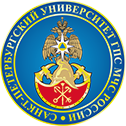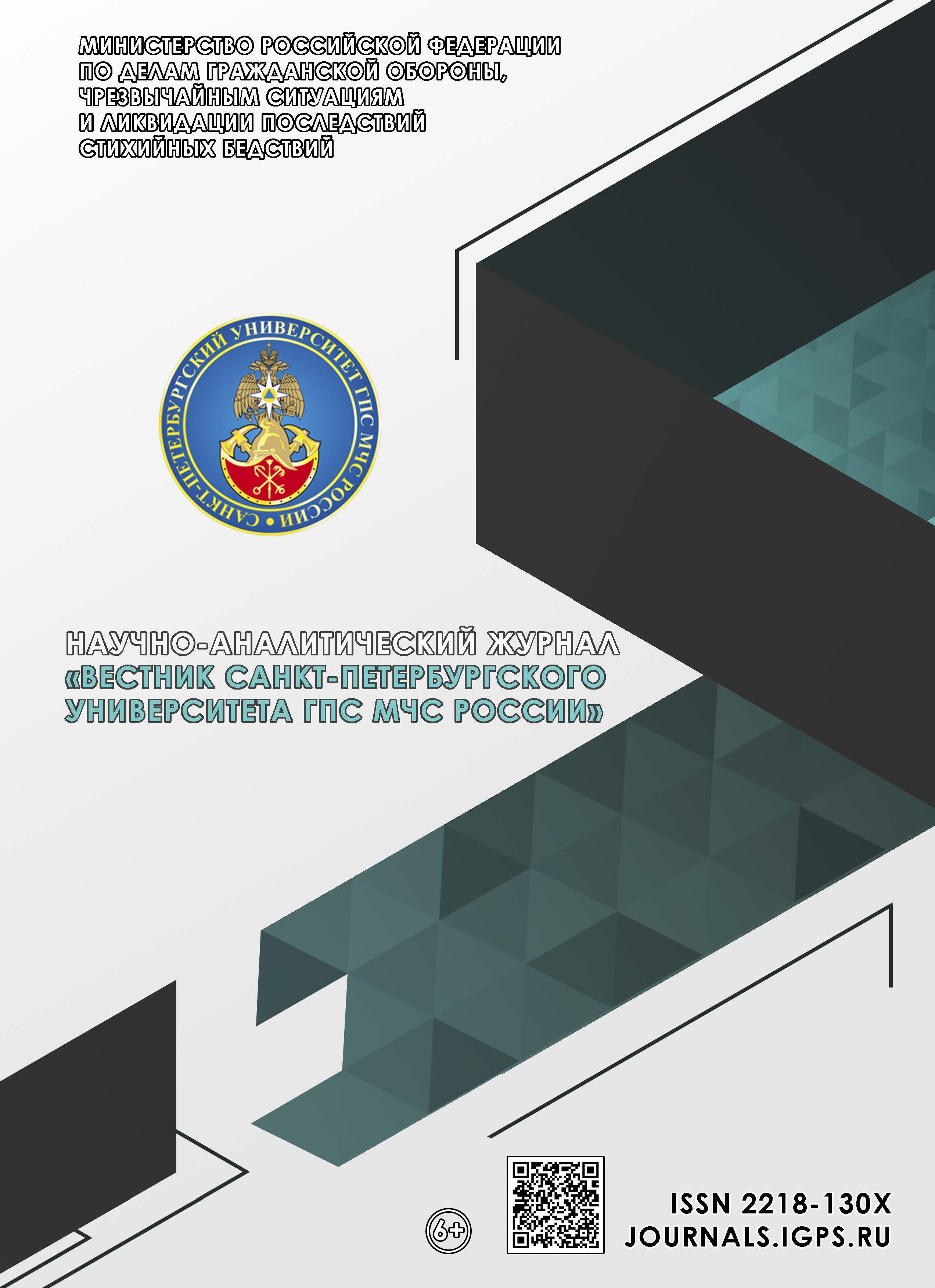Russian Federation
from 01.01.2013 until now
Russian Federation
UDC 614.842
In an emergency, such as a fire or a terrorist attack, an important aspect is the safe evacuation of people. The unpredictability of the situation makes the task of emergency evacuation one of the main problems. The development of artificial intelligence technologies opens up possible promising ways of developing evacuation management systems. An intelligent evacuation management system can help track the movement and coordinates of people and related critical factors during the evacuation process (for example, slowing down traffic along the paths, blocking the paths, etc.). The study is devoted to the construction of a decision support system for the evacuation of people from buildings based on the results of modeling the development of a fire, intelligent forecasting of the evacuation time in the conditions of the current situation during a fire. The system allows dynamically forming optimal evacuation routes in a changing situation. The proposed results allow us to further move on to the development of an automated intelligent evacuation management system, which will ensure increased safety for evacuees, regardless of evacuation scenarios and the current situation in the building.
evacuation, intelligent system, forecasting, structural diagram, monitoring the number of people, modeling, evacuation management
1. Prisadkov V.I., Muslakova S.V., Fadeev V.E. K voprosu obespecheniya pozharnoj bezopasnosti torgovo-razvlekatel'nyh centrov // Sovremennye problemy grazhdanskoj zashchity. 2020. № 1 (34). S. 49–59. EDN LHTQQR.
2. Sazonova S.A., Zvyaginceva A.V., Osipov A.A. Modelirovanie scenariev razvitiya pozhara v torgovom razvlekatel'nom centre // Modelirovanie sistem i processov. 2021. T. 14. № 3. S. 50–59. DOI:https://doi.org/10.12737/2219-0767-2021-14-3-50-59. EDN YAQFWT.
3. Shihalev D.V. Ob odnom sposobe upravleniya usloviem bezopasnosti lyudej pri modelirovanii evakuacii // Modelirovanie, optimizaciya i informacionnye tekhnologii. 2021. T. 9. № 2 (33). DOI:https://doi.org/10.26102/2310-6018/2021.33.2.025. EDN AMDEEG.
4. Mel'nikov G.O., Tursenev S.A. Integraciya tekhnologii iskusstvennogo intellekta dlya povysheniya effektivnosti evakuacii lyudej pri pozhare // Prirodnye i tekhnogennye riski (fiziko-matematicheskie i prikladnye aspekty). 2023. № 4 (48). S. 30–36. DOI:https://doi.org/10.61260/2307-7476-2024-2023-4-30-36. EDN DDHLPZ.
5. Kotkova E.A. Model' nejronnoj seti dlya prognozirovaniya predevakuacionnogo povedeniya lyudej pri pozhare // Nacional'naya bezopasnost' i strategicheskoe planirovanie. 2022. № 2 (38). S. 66–72. DOI:https://doi.org/10.37468/2307-1400-2022-2-66-72. EDN UBIKMZ.
6. Jiang H. Mobile fire evacuation system for large public buildings based on artificial intelligence and IoT // IEEE Access. 2019. Vol. 7. P. 64101–64109. DOI:https://doi.org/10.1109/ACCESS.2019.2915241.
7. Alqahtani A., Alsubai S., Bhatia M. Applied artificial intelligence framework for smart evacuation in industrial disasters // Applied Intelligence. 2024. P. 1–16. DOI:https://doi.org/10.1007/s10489-024-05550-7.
8. Intelligent evacuation management systems: A review / A.M. Ibrahim [et al.] // ACM Transactions on Intelligent Systems and Technology (TIST). 2016. Vol. 7. № 3. P. 1–27. DOI:https://doi.org/10.1145/2842630.
9. Shihalev D.V., Korepanov V.O. Monitoring raspredeleniya lyudej v zdanii dlya zadachi upravleniya evakuaciej. Chast' 1 // Tekhnologii tekhnosfernoj bezopasnosti. 2019. № 1 (83). S. 68–77. DOI:https://doi.org/10.25257/TTS.2019.1.83.68-77. EDN ZCTHXF.
10. Kolodkin V.M., Varlamov D.V. Osobennosti sociotekhnicheskoj sistemy spaseniya lyudej pri pozhare v obshchestvennom zdanii // Tekhnologii tekhnosfernoj bezopasnosti. 2019. № 1 (83). S. 101–112. DOI:https://doi.org/10.25257/TTS.2019.1.83.101-112. EDN EAXVEJ.
11. Ding Y., Zhang Y., Huang X. Intelligent emergency digital twin system for monitoring building fire evacuation // Journal of Building Engineering. 2023. Vol. 77. P. 107416. DOI:https://doi.org/10.1016/j.jobe.2023.107416.
12. BIM integrated smart monitoring technique for building fire prevention and disaster relief / M.Y. Cheng [et al.] // Automation in Construction. 2017. Vol. 84. P. 14–30. DOI:https://doi.org/10.1016/j.autcon.2017.08.027.
13. Kotkova E.A., Matveev A.V. Metodika intellektual'nogo prognozirovaniya effektivnosti upravleniya evakuaciej lyudej iz obshchestvennyh zdanij // Nauch.-analit. zhurn. «Vestnik S.-Peterb. un-ta GPS MCHS Rossii». 2021. № 4. S. 107–120. EDN PLARHX.
14. Sistema prognozirovaniya effektivnosti evakuacii iz zdanij s ispol'zovaniem nejronnyh setej «Evoneural»: sv-vo o gos. reg. programmy dlya EVM № 2022611075. Ros. Federaciya. № 2022610416: zayavl. 13.01.2022: opubl. 19.01.2022 / E.A. Kotkova, A.V. Matveev; zayavitel' S.-Peterb. un-t GPS MCHS Rossii. EDN: https://elibrary.ru/XPWWGT.
15. Bluetooth portal based system to measure the performance of building emergency evacuation plans and drills / V. Astarita [et al.] // IET Intelligent Transport Systems. 2018. Vol. 12. № 4. P. 294–300. DOI:https://doi.org/10.1049/iet-its.2017.0219.
16. Kalachin S.V. Prognozirovanie opasnyh faktorov pozhara v pomeshchenii metodami mashinnogo obucheniya // Bezopasnost' truda v promyshlennosti. 2020. № 3. S. 48–54. DOI:https://doi.org/10.24000/0409-2961-2020-3-48-54. EDN SZUBRC.
17. Bogush R.P., Zaharova I.Yu. Algoritm soprovozhdeniya lyudej na videoposledovatel'nostyah s ispol'zovaniem svyortochnyh nejronnyh setej dlya videonablyudeniya vnutri pomeshchenij // Komp'yuternaya optika. 2020. T. 44. № 1. S. 109–116. DOI:https://doi.org/10.18287/2412-6179-CO-565. EDN NWRYKS.
18. Imitacionnoe modelirovanie i kriterii reshenij po protivopozharnoj zashchite obshchestvennyh zdanij / V.I. Prisadkov [i dr.] // Pozharovzryvobezopasnost'. 2023. T. 32. № 4. S. 5–14. DOI:https://doi.org/10.22227/0869-7493.2023.32.04.5-14. EDN JBLZTA.







